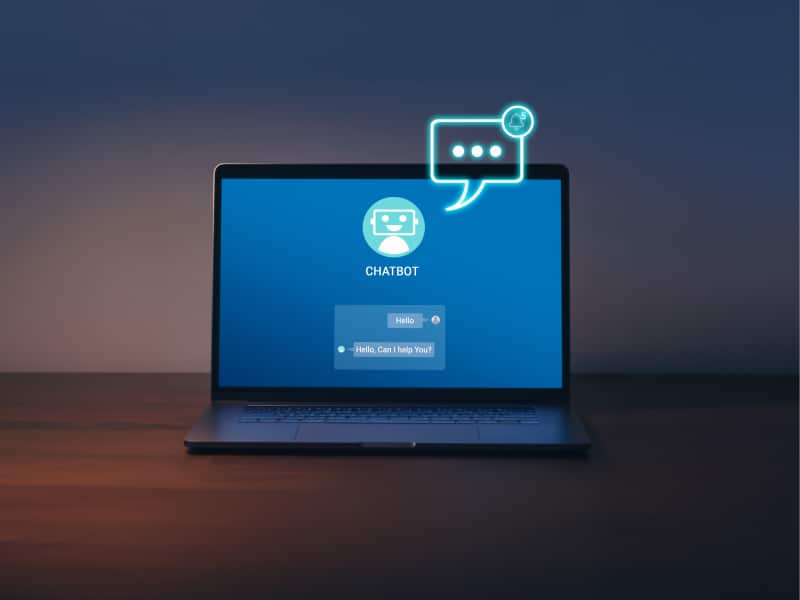It’s a frustrating and all-too-familiar experience. You need a quick answer on your recent order from a favorite retailer. You spot an online chat support icon on their website, eagerly click it, and type out a question. A few seconds later, the chatbot responds with a cheerful, “Hello! How can I assist you today?”
You brush off the fact that you need to repeat the question, still hoping for a quick response. Instead, the chatbot spits out a generic answer that doesn’t quite fit your query. You rephrase the question, but the bot keeps coming back with irrelevant information. Impatience mounts as you now try to outsmart the algorithm. Finally, after multiple failed attempts, the chatbot offers to connect you with a live agent.
Relieved, you look for a quick handover to a human representative. But then, the dreaded message appears: “Our agents are currently unavailable. Please expect a response within 48 hours.” What should have been a simple, quick interaction requires more patience and persistence than it should.
While automation and AI promise to improve customer service, they often fall short, leaving customers exasperated. How can brands use these technologies effectively without compromising the service customers expect?
Customer Service Automation Has Its Challenges
By identifying the key challenges involved in automation for customer service, we can address them and develop the best ways to take advantage of the technology.
- Lack of Personalization
One of the most common issues with automated customer service is the lack of personalization. Chatbots and automated systems often provide generic responses that do not cater to individual customer needs. And while high personalization may not be necessary for every inquiry, a complete lack of it can lead to frustration for customers.
- Miscommunication and Misunderstanding
Automated systems rely on pre-programmed responses and keyword recognition, which can lead to miscommunication. If a customer’s query doesn’t match the bot’s expected input, the response can be irrelevant or incorrect, accelerating customers’ dissatisfaction.
- Delayed Human Interaction
Most customers who use chat functions are looking for quick help. They don’t want to wait for an email response. And they surely don’t want to endure a lengthy voice message warning not to skip ahead because “menu options have changed.” Long wait times defeat the very purpose of the chat.
- Over-reliance on Automation
As automated platforms become more available, some companies rely too heavily on them and may try to use automation as a complete replacement for human interaction. This can be a mistake, especially for complex issues that require a nuanced understanding and personal contact.
- Technical Glitches
Like any technology, automated systems can experience technical issues. Downtime, glitches, and errors can disrupt the customer service process, leaving customers stranded without the help they need. Problems happen, so it’s important to monitor the platforms to ensure downtime is kept to a minimum.
Advantages of Automation in Customer Service
Leveraging automation for customer service is a double-edged sword. When managed well, the challenges are minimal, and automation can empower the customer service experience. There are clear advantages in the use of automation in customer service when implemented correctly.
- Efficiency and Speed
Automation can handle a high volume of inquiries simultaneously, providing instant responses to common questions and freeing up human agents to deal with more complex issues.
- Cost-Effectiveness
It should never replace the human touch, but sensible use of automation reduces the need for a large customer service team, which saves costs.
- Consistency
Automation systems ensure that customers receive consistent responses, which helps to maintain a uniform brand voice and customer experience.
- 24/7 Availability
An automated system can operate around the clock, which is a huge advantage for any customer-focused company. Night-owl customers can get their support at any time of day or night.
To navigate these challenges and harness the benefits of automation, here is a quick step-by-step guide to effective customer service automation.
Eight Steps to Effective Customer Service Automation
- Identify and Segment Customer Queries
Analyze the types of inquiries the customer service team receives and categorize them based on complexity. Use automation for simple, repetitive tasks and reserve human agents for more complex issues.
- Develop a Robust Knowledge Base
Create a comprehensive and easily accessible knowledge base that both chatbots and customers can use. This will enable the chatbot to provide accurate and relevant information.
- Implement Smart Routing
Ensure your chatbot can recognize when an issue needs human intervention and route it to the appropriate agent promptly. Smart routing minimizes delays and enhances the customer experience.
- Train Your Chatbots
The smarter your chatbot becomes, the more accurately it understands and responds to customer queries. Machine learning continuously updates and trains your chatbots with updated or specific information and scenarios for better responses.
- Monitor and Optimize
Regularly monitor the performance of automated platforms. They should be considered living, breathing systems. Consistently gather feedback from customers and agents to identify areas for improvement. Most importantly, use analytics to track key metrics such as response time, resolution time, and customer satisfaction.
- Blend Automation with Human Touch
For us at Mod Op, the balance between automation and human interaction is a core principle. It’s best to use automation for straightforward tasks and to ensure human agents are available for more nuanced, complex matters. This approach will provide efficiency without sacrificing personalization.
- Communicate Clearly
Clear and transparent communication helps set expectations with your customers. Don’t be shy about acknowledging what your automated system can and cannot do. Provide clear instructions on how to escalate issues to a human agent if needed.
- Maintain a Human Element in the Automation
While you shouldn’t try to position your chat bot as a real person, you should maintain a friendly and empathetic tone in the automated responses. When possible, personalize those automated messages to enhance customer experience and them customers feel valued.
When done well, customer service automation can be a game-changer that brings together efficiency, consistency, and availability. But it’s critical to manage these systems carefully to avoid turning a quick question into a marathon of frustration. The key is finding that sweet spot between automation and human interaction, and when that happens, customers will walk away from every interaction feeling satisfied and valued.
The Latest
We study the game as hard as we play it.
Learn with us what’s now and next.

